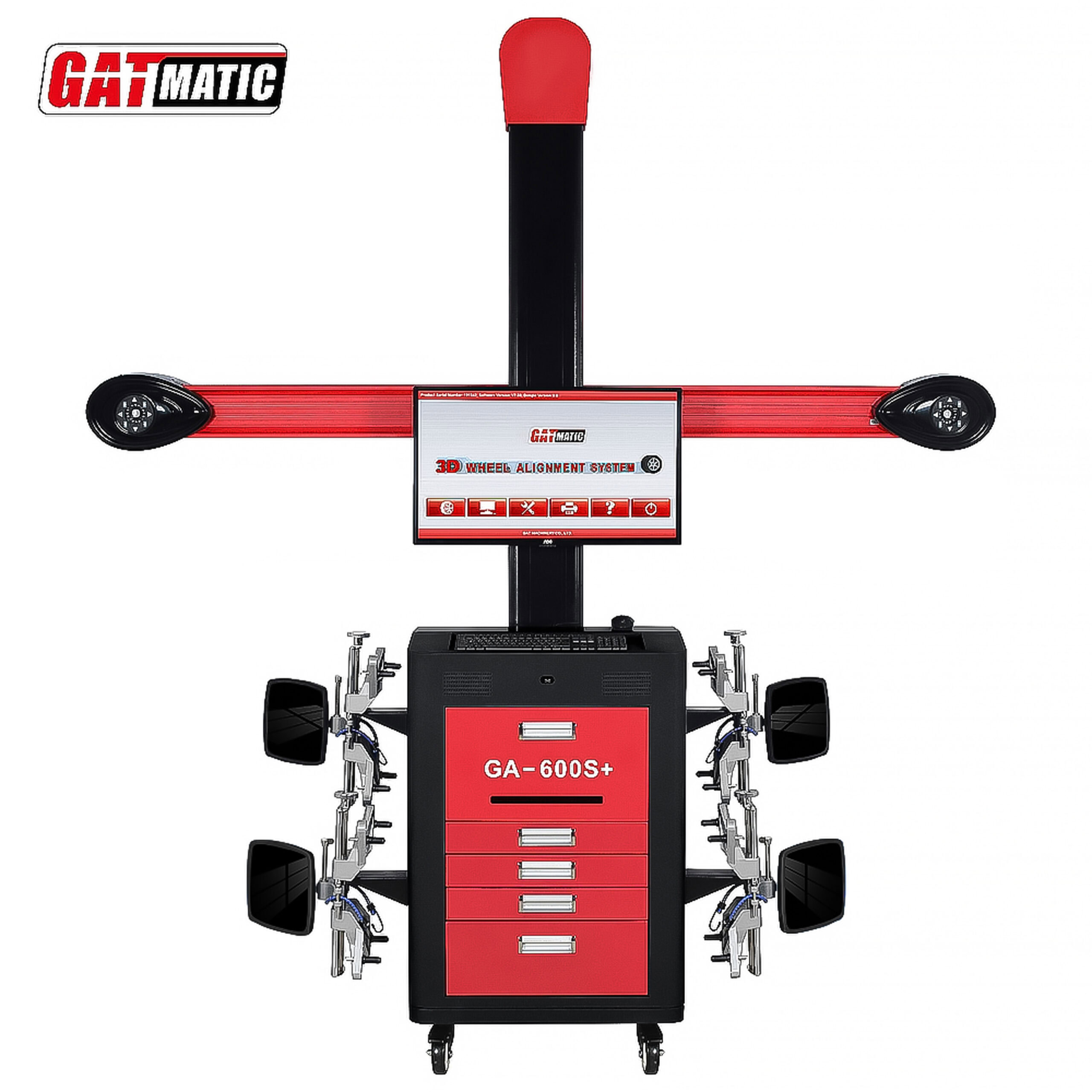What are the benefits of the mobile workstation design in the 3D Wheel Alignment Machine
Introduction
In the fast-paced world of automotive service, efficiency and precision are paramount. Among the essential tools for vehicle maintenance, 3D wheel alignment machines stand out for their ability to ensure vehicles operate safely and efficiently. The advent of mobile workstation designs has revolutionized how these machines are utilized in service environments. This essay explores the numerous benefits of mobile workstation design in 3D wheel alignment machines, highlighting their impact on space efficiency, accessibility, operational efficiency, technological advancements, and cost-effectiveness.
I. Space Efficiency
One of the most significant advantages of mobile workstation designs is their ability to optimize space within automotive service facilities. Unlike traditional fixed alignment bays that require dedicated space, mobile workstations can be easily relocated as needed. This flexibility allows service centers to adapt to various shop layouts and maximize available space. Furthermore, many mobile units feature compact designs with portable cabinets that can be moved between different service areas. This adaptability not only enhances workflow efficiency but also enables shops to accommodate a wider range of services without the constraints of fixed equipment.
II. Increased Accessibility
Mobile workstation designs greatly enhance accessibility for technicians and customers alike. These machines can be used on various types of vehicle lifts, including four-post and scissor lifts, making them suitable for diverse service environments. This versatility allows automotive technicians to perform alignments on multiple vehicle types without being restricted by the machine’s location. Additionally, mobile designs often support multi-station capability, enabling shared use across different service stations within a shop. This reduces the need for multiple machines and associated costs while maximizing productivity.
III. Enhanced Operational Efficiency
Operational efficiency is another critical benefit of mobile workstation designs in 3D wheel alignment machines. Many modern mobile aligners come equipped with user-friendly interfaces that provide step-by-step guidance for technicians. This ease of use allows for quick setups and operations, enabling technicians to perform alignments swiftly and accurately without extensive training. The ability to move the workstation as needed further contributes to time savings; technicians can quickly reposition the machine to accommodate various vehicles or service requests, significantly improving overall service speed.
IV. Technological Advancements
The integration of advanced technology is a hallmark of modern mobile workstation designs. Many mobile 3D aligners feature cutting-edge measurement systems that utilize 3D imaging and high-definition cameras to ensure precise measurements and adjustments. These technological advancements not only enhance accuracy but also streamline the alignment process. Additionally, many models include integrated support features such as built-in help systems, voice guidance, and real-time data access through tablets or smartphones. These innovations facilitate smoother operations and empower technicians with the information they need to deliver high-quality services.
V. Cost-Effectiveness
Cost-effectiveness is a crucial consideration for any automotive service provider, and mobile workstation designs offer significant financial benefits. By eliminating the need for a fixed alignment bay, shops can lower their operational costs while still providing high-quality services. Moreover, the ability to perform more alignments in less time can lead to higher throughput and increased profitability for service centers. The investment in a mobile workstation can pay off quickly through improved efficiency and enhanced customer satisfaction.
Conclusion
In conclusion, the benefits of mobile workstation design in 3D wheel alignment machines are manifold. From optimizing space and increasing accessibility to enhancing operational efficiency and integrating advanced technology, these machines represent a significant advancement in automotive service capabilities. As the industry continues to evolve, adopting mobile workstation designs will likely become increasingly essential for service providers seeking to improve their operations and meet customer demands effectively. Embracing this technology not only positions shops for success but also ensures they remain competitive in an ever-changing market landscape.
FAQs
1. What is a mobile workstation design in 3D wheel alignment machines?
A mobile workstation design refers to a portable and flexible alignment system that allows technicians to perform wheel alignments in various locations within a workshop or even outside of it, without needing a dedicated space or fixed installation.
2. How does a mobile workstation improve space efficiency?
Mobile workstations are compact and can be easily moved between different service areas, allowing shops with limited space to utilize their layout more effectively. They eliminate the need for dedicated alignment bays, maximizing the available workspace for other services.
3. Can mobile wheel alignment machines be used on different types of vehicle lifts?
Yes, many mobile 3D wheel alignment machines are designed to be compatible with various vehicle lifts, including four-post and scissor lifts, making them versatile for different service environments and vehicle types
4. What advantages do mobile workstations offer in terms of operational efficiency?
Mobile workstations typically feature user-friendly interfaces that simplify the alignment process, enabling technicians to set up and operate the machines quickly. This reduces downtime and allows for faster service delivery, which can improve overall shop productivity
5. Are mobile wheel alignment machines equipped with advanced technology?
Yes, many mobile designs incorporate advanced technologies such as 3D imaging, high-definition cameras, and automated measurement systems that enhance accuracy and streamline the alignment process
6. How do mobile workstations contribute to cost-effectiveness for automotive service providers?
By eliminating the need for fixed installation and dedicated alignment bays, mobile workstations reduce overhead costs. Additionally, their ability to perform more alignments in less time can lead to increased revenue potential for service centers
7. Is training required for technicians to operate mobile wheel alignment machines?
Most modern mobile wheel aligners are designed with intuitive interfaces and step-by-step guidance, making them easy to use without requiring specialized training. Some systems even come with Wi-Fi-enabled tablets that assist technicians throughout the alignment process
Describe Your Needs In Detail!
We will carefully evaluate your needs and give professional solutions.



